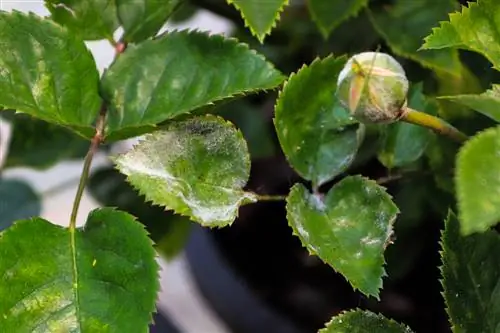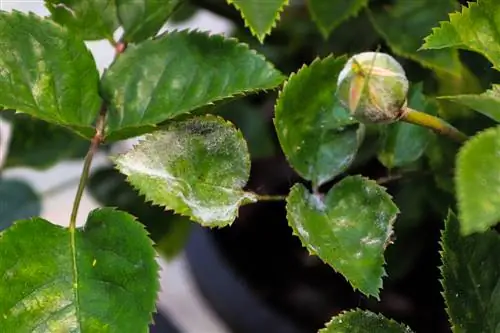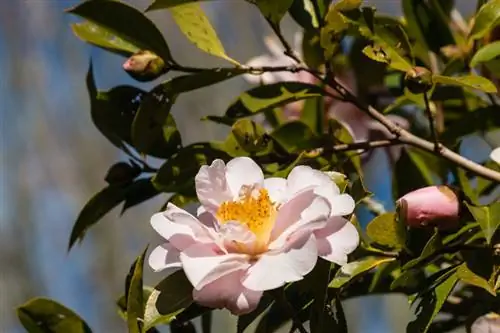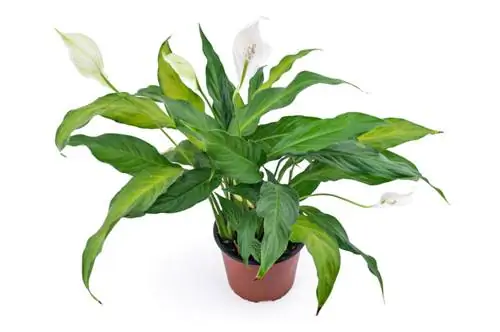- Author admin [email protected].
- Public 2023-12-16 16:46.
- Last modified 2025-01-23 11:20.
The countless species and varieties of the Rosa genus are unfortunately quite susceptible to various diseases, which are primarily caused by an unsuitable choice of location or incorrect care. Only wild roses and their hybrids are more robust than many cultivated roses, although these representatives of the rose family are not immune to the most common leaf diseases. These are mainly caused by fungi.

Which leaf diseases can affect roses?
Roses can be affected by foliar diseases such as powdery mildew, downy mildew, star sooty mildew, rose rust and gray mold rot. These fungal diseases occur primarily in damp weather and cause spots, redness or deposits on the leaves and shoots of plants.
Powdery mildew
Due to its increased occurrence, especially on hot and dry summer days, powdery mildew is also known as the “fair weather fungus”. It primarily attacks the leaves and young shoots and sometimes also buds and flowers. Powdery mildew is caused by the fungus Sphaerotheca pannosa, although there is also a variety that only affects roses. This can be recognized by a white coating on both sides of the leaves and by reddish colored leaf ends.
Downy mildew
In contrast to powdery mildew, downy mildew, which is caused by the fungus Peronospora sparsa, mainly occurs on humid summer days. You can recognize an infestation by the dark purple to reddish-brown leaf spots that are brown on the underside. The typical white-gray spore coating also appears here when the humidity is high. In addition to the leaves, the stems are also often affected.
Star sooty dew
Star sooty mold (caused by Diplocarpon rosae) also appears on the leaves, primarily in damp weather. The rose petals initially lighten or turn yellow and then develop round, black-brown spots. These spots are small at first, but enlarge as the infestation progresses.
Rose Rust
The fungus Phragmidium mucronatum primarily attacks roses in spring and causes the very common rust disease. This can be easily recognized by large, orange spots on the top of the leaves. The rose rust lasts until late summer, when tiny black fruiting bodies form on the underside of the leaves. The fungal spores overwinter in these and then attack the rose again the following spring.
Gray mold rot
Typical of an infestation with Botrytis cinerea, the gray mold rot, are reddish or brown spots on the leaves. As the disease progresses, soft, rotten spots appear not only on the leaves, but also on the shoots and flowers. Gray mold rot occurs particularly frequently in high humidity and in rainy weather.
Tip
Most leaf diseases on roses are caused by excessive moisture and especially when the leaves are permanently wet - for example because it has been raining for a long time or due to incorrect watering behavior.






